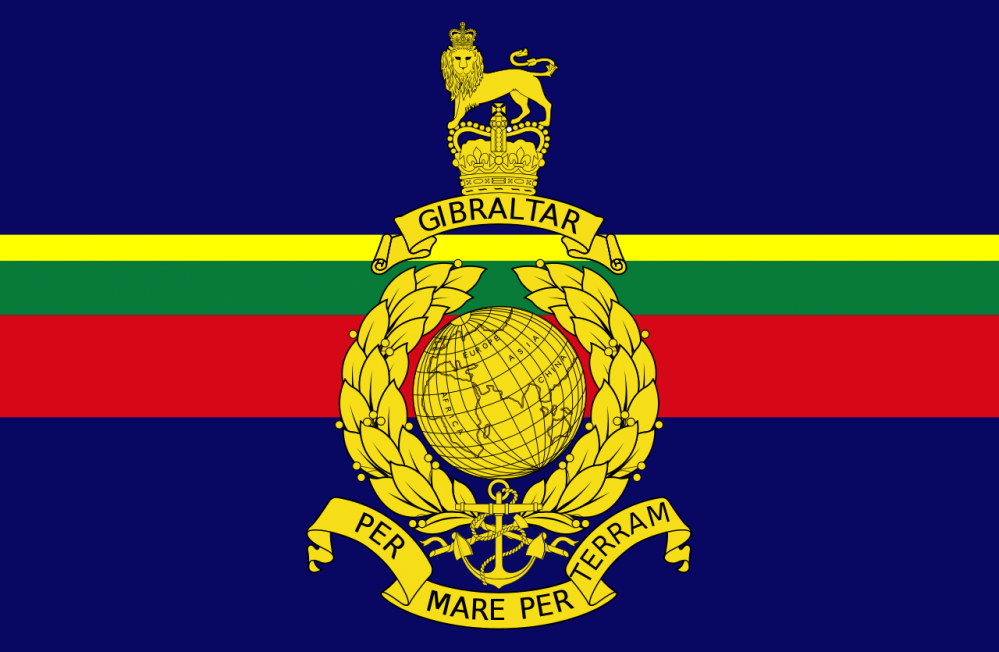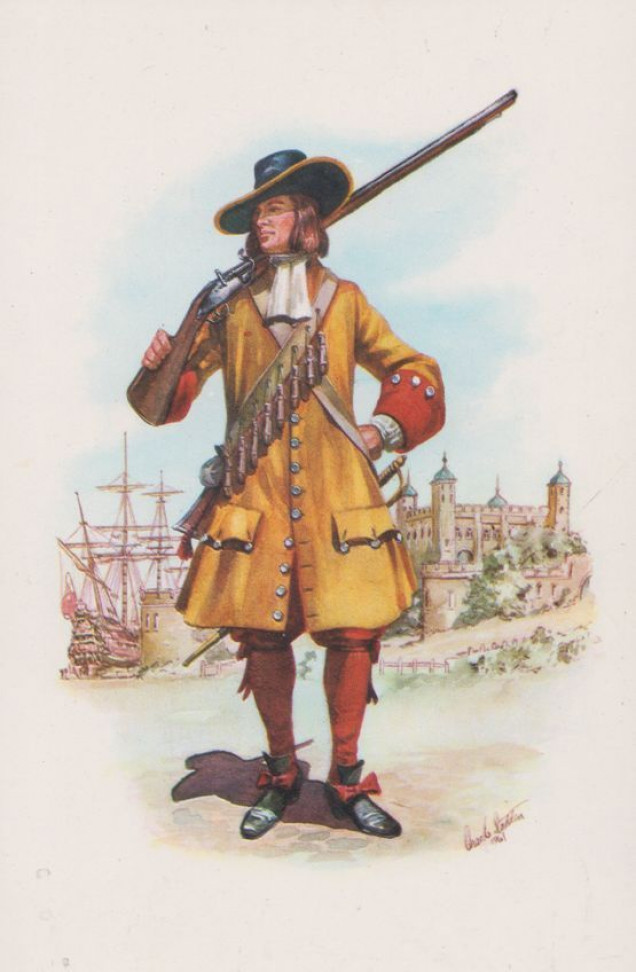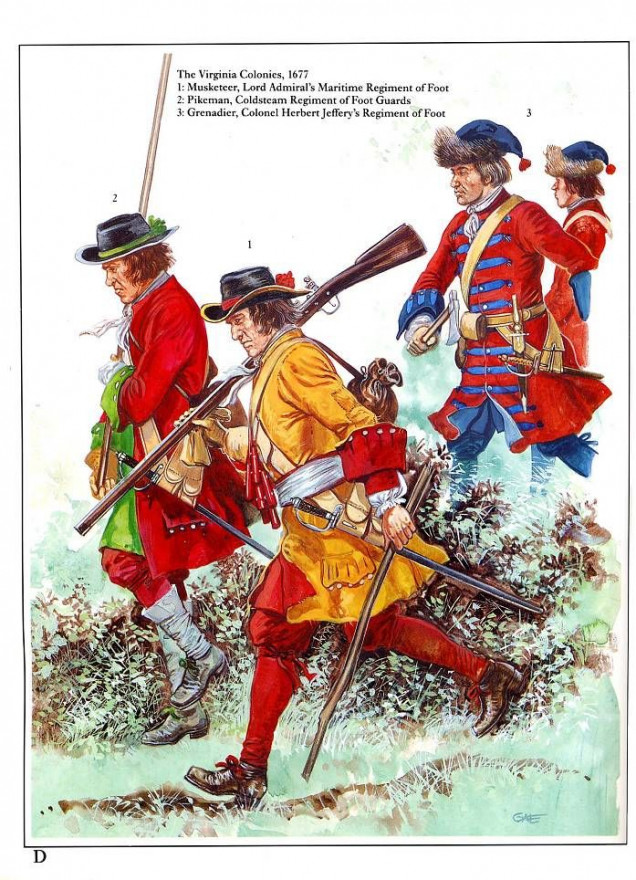
Per Mare Per Terram
The Admiral's Regiment
In 1664, the long history of what would become the Royal Marines began with the formation of the Duke of York and Albany’s Maritime Regiment of Foot. Alongside the Holland Regiment (that later became a line infantry regiment), they were paid for by the Navy and used as sea-borne infantry which basically consisted of fighting on the ships during naval battles, but also assisting in landings, and the like. This is also a during a time where Regiments of Foot were sometimes ‘borrowed’ by the Navy to augment their Marines in times of need, such as the Battle of Solebay during the 3rd Anglo-Dutch War. If you look into it yourself, the term used for such units is that they are employed as Marines, or something similar. For now, though, let’s focus on the Admiral’s Regiment (the name the Duke of York and Albany’s Maritime Regiment of Foot became known as…you can understand why…
 This image is probably the most useful for us gamers out there, and covers pretty much everything we need.
This image is probably the most useful for us gamers out there, and covers pretty much everything we need.The colours only go so far when trying to find miniatures, however, so when looking out for a mini you can use you really want to think about the uniforms the British Army were wearing at the time, and the equipment they were carrying. An important note on weapons is that standards of the time were very different. A colonel of a regiment was responsible for outfitting his men so a certain degree of variation across an army would have been common. This was a practice up to as late as 1745, but for the Admiral’s Regiment the most likely weapons would have been matchlock guns with the possibility of some flintlocks creeping in as time went by.
 Here you can see a matchlock over the shoulder. For those unsure what I mean you can see the 'lock plate' on the side of the musket above the trigger. Where the plate goes towards the Marine's neck you can just make out a lit piece of potassium nitrate soaked cord called a match. This would be lit and swung into the priming pan of the musket to fire the charge.
Here you can see a matchlock over the shoulder. For those unsure what I mean you can see the 'lock plate' on the side of the musket above the trigger. Where the plate goes towards the Marine's neck you can just make out a lit piece of potassium nitrate soaked cord called a match. This would be lit and swung into the priming pan of the musket to fire the charge. By contrast, the Marine pictured here has a noticible hammer pointing up from above where the trigger is. This mechanism forces a piece of flint to scrape along a piece of steel called a frizzen to create sparks to ignite the priming powder. The obvious advantage here is that would don't have a constantly burning thing attached to the explody thing. Science is great.
By contrast, the Marine pictured here has a noticible hammer pointing up from above where the trigger is. This mechanism forces a piece of flint to scrape along a piece of steel called a frizzen to create sparks to ignite the priming powder. The obvious advantage here is that would don't have a constantly burning thing attached to the explody thing. Science is great.The next question is minis. This regiment existed from 1664 until James II was deposed in 1689 and places them in the ‘Pike and Shotte’ era of wargaming, albeit the tail end of this period. While I don’t doubt that there is a company out there who make purpose built minis to represent these chaps, my ‘readily available’ would be the New Model Army era minis as they will be readily available. Warlord, for example, makes a set of them in, I believe, metal, but there may be a company somewhere that makes plastics. With modification you could use some of the Marlborough’s Wars Grand Alliance Infantry from Warlord, but you would need to find the right headgear and, in general, it would be too much of a faff to do it without it becoming more trouble than the metal minis.










































































Leave a Reply